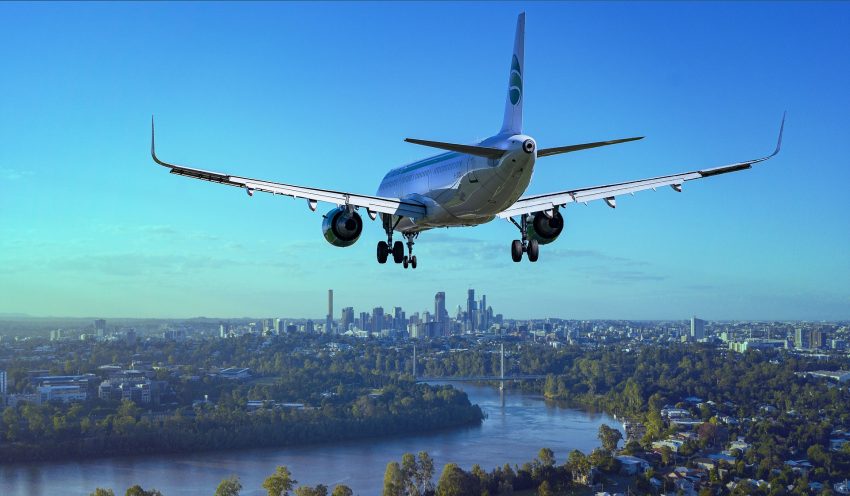When we imagine aircraft noise, we automatically picture a specifically personal situation with a plane flying overhead. By contrast, aircraft noise exposure policies are made for long-term exposure levels under varying conditions and while balancing the interests of multiple parties. It’s hard to imagine what a policy will feel like, so it’s hard to know if it is fair. Could a different approach to calculating total noise exposure help?
[blockquote text=”What about the potential for open-source data and software?” text_color=”#004361″ show_quote_icon=”yes”][vc_separator type=’transparent’ position=’center’ color=” thickness=’5′ up=” down=”]
Mind the ‘feeling’ gap
Regulatory policy needs to be able to create long-term conditions for the broader community that will balance multiple factors and the interests of multiple groups of people and organisations. Airports, airlines, land developers and others must be able to comply with the policies when planning their long-term operations and investing in projects and infrastructure. Therefore, noise exposure should be based on an accumulated total of multiple factors and changeable circumstances over a longer period of time.
In our previous blog we talked about the how total annual average noise exposure levels are calculated for use in setting policy, and that they are difficult for people to understand because they represent norms for noise nuisance rather than any individual sound level. It is hard to imagine wat a norm ‘feels’ like, even if the methodology is sound. However, there may be ways to increase transparency and bridge that gap.
Can we improve the algorithms?
From our experience with noise modelling, there are a couple of areas that could offer options for increasing transparency and improving the algorithms that might bridge the gap between policy and how communities feel about aircraft noise.
ADJUSTING THE METRIC
Most calculations currently use Lden to calculate the total annual average noise levels. Although there are many others, it is an effective measure because it adjusts, or weights, noise exposure levels to reflect the number of aircraft movements and differences in how noise is experienced during the day compared to evening and night (den = day, evening, night).
For example, twice the number of aircraft movements is equivalent to 3 dB(A) when calculating the total annual average noise exposure. This means that the number of flights could double without affecting total noise exposure if the noise level is also decreased by 3 dB(A). At the same time, community consultations (see Schiphol’s results here – in Dutch) show a marked increase in flight frequency being experienced as a nuisance. Is this trade-off in Lden between the number of aircraft movements and the decibel level still realistic for calculating total noise exposure?
CONTINUOUS IMPROVEMENT USING ACTUAL MEASUREMENTS
Noise modelling algorithms could be improved as part of a continuous feedback loop. Naturally, the first step is using the best algorithms available and making sure the data used is accurate. Then, setting up a permanent system to take continuous measurements in real time would provide important data that could be fed back into the system to validate the original calculations and adjust the model where necessary to better represent the actual noise exposure.
The calculations for most airports could be improved if more actual data was available. This can vary from weather data to radar information and aircraft data. The calculations become much more reliable when we can use exact flight paths, for example, and when altitude, speed and weight are accurate. In other words, the closer the input is to what is actually happening, the more accurate the noise modelling.
Bridging the gap
The use of annual averages to limit aircraft noise exposure is, without question, still preferable to attempting to write – let alone enforce – a policy that covers every single noise eventuality. This may be the most important reason European regulations prescribe calculations based on annual average noise exposure.
The difficulty arises in trying to communicate noise exposure levels in a way that the local community can also get a feel for what they mean. Could changes in the metrics and (continuous) improvements to the models, as mentioned above, reduce the debate about transparency in the calculations?
And what about the potential for open-source data and software? That could provide more transparency in noise calculations and give anyone who is interested more useful and accurate information. Giving the community an opportunity to check, use and process data in this way could be a welcome approach to improving aircraft noise exposure calculations.
These are just a few of our ideas for how noise exposure norms might be re-evaluated. We would be very interested to hear your suggestions in the comments below!
About To70. To70 is one of the world’s leading aviation consultancies, founded in the Netherlands with offices in Europe, Australia, Asia, and Latin America. To70 believes that society’s growing demand for transport and mobility can be met in a safe, efficient, environmentally friendly and economically viable manner. To achieve this, policy and business decisions have to be based on objective information. With our diverse team of specialists and generalists to70 provides pragmatic solutions and expert advice, based on high-quality data-driven analyses. For more information, please refer to www.to70.com.


I am probably one of many who has experienced for decades how Lden and friends do not reflect annoyance. It is the number of noise events that exceed the normal background level that gets us all irritated beyond belief. Why can this metric not be introduced and used and why is there no more research on the subject ? I suspect the reason is that all airports want to do is grow. So looking at number of flights (and thus at moments of respite which have been reduced to a sparse few minutes here and there in our case) might just show how bad the situation is. For your information: we live at more than 14 km from Zaventem airport and the situation is just hellish.